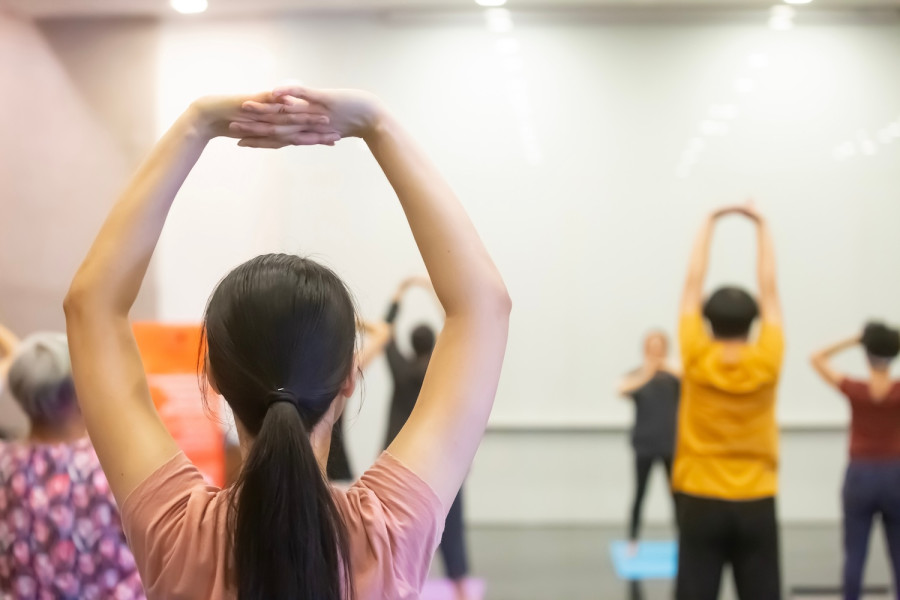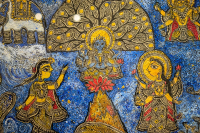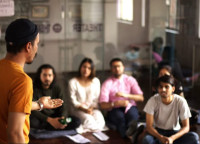Culture & Lifestyle
Dance therapy and healthy expression of emotions
This art therapy allows the body to move rhythmically and contributes to physical, cognitive, social, and emotional well-being.
Apecksha Gurung
Santosh Bhujel, a dance instructor at Titan Dance Studio and Gems, says, “Dancing is like being in a flow state where our body and mind are in harmony,”
He believes that people can get creative when they are in a flow state.
Ganesh Amgain, a dance therapist, Reiki practitioner and Gestalt psychotherapist, first learned about the therapeutic use of dance when he met a dance therapist from India at the Lalitpur-based Ankur Counseling and Training Centre.
Inspired by this encounter, he pursued and completed a postgraduate degree in the Laban Dance Movement.
“Dancing is beneficial to an individual’s health. However, dance therapy is much more,” says Amgain.
Elaborating on dance therapy, he says, “Dance therapy is a type of psychotherapy that supports the emotional expressiveness of an individual. To be precise, it is an expression art therapy that follows the rhythmic movement of the body and contributes to the physical, cognitive, social and emotional well-being of an individual.”
Amgain says he has been practising movement therapy since 2017.
“You can be a non-dancer but still be a dance therapist. In Laban Movement Analysis, we analyse direct and indirect movement,” he states.
Amgain also explains that it won't matter even if the client is a non-dancer. He says, “We create a conducive environment for our clients. So s/he can dance freely,”
“It’s not about dancing. It’s about moving,” he adds.
Amgain opines, “Dance therapy helps increase body awareness. Usually, I have adults, particularly young ones, as my clients. For some, it works beautifully, but for some, it doesn’t.”
He further says, “Talking about the changes, it's all about the individual differences. I’ve felt this therapy has worked wonders in addressing a myriad of issues, including low self-esteem, relationship problems, anxiety, social phobia and adjustment disorder. I often use movement in couple counselling, which works beautifully.”
Amgain says, “Some people come to me saying they have a dissociative disorder and believe dance therapy will help them manage their illness. It shows that people are becoming more aware of mental health issues nowadays.”
In talking about the technique, Amgain shares, “We use movement both as an assessment and an intervention. We create an open space for our clients and mirror their movements, similar to how empathy works, to develop a therapeutic alliance—a process known as ‘kinesthetic empathy assessing movement.’ Our sessions include a warm-up, a dance therapy ritual, theme development and intervention, and a closing.”
“But the thing is, this protocol doesn’t necessarily fit with every client,” he says.
Amgain explains, “Certain events impact the body and subsequently affect us. Traumatic events or abuse get stored in our muscle memory, making us feel numb. Dance therapy helps individuals move from that vulnerable state to an improved state, reconnecting with their bodies.”
“Dance therapy can help abuse victims develop a sense of body boundaries, enabling them to recognise their own space while also respecting others’s space.”
He shares, “This therapy is a funny way of dealing with your underlying issues. It works so subtly that you don't even feel like you're working. We make our clients attuned to the allure of music and work on rhythmic movement to connect the body, mind, and spirit.”
Amgain recommends this therapy to everyone, saying, “Movement is a universal language, and we all do it. Even people in wheelchairs can practice it.”
“We meet them where they are, in their current state of movement vocabulary, and then we work to expand it from there," Amgain explains. “It’s inclusive for all people.”
Adarsha Pradhan, Reiki Grand Master, practises movement therapy and emphasises Nonverbal communication as an essential part of the therapeutic process.
“In our Holistic Minds and Life Celebration Center, Dhapasi, we practice movement for overall happiness and excitement in our body. Every human being needs it,” says Pradhan.
Giving more priority towards the Tri-origin concept, where he talks about Hetro energy (Raja), Homo energy (Tamo) and Neutro energy (Satto). Pradhan adds, “Our body needs to activate neutron energy to balance all those energies present in our body because the body and mind are intertwined.”
Pradhan says, “In Nepal, we don’t have certified dance therapies, but as a part of the therapeutic process, we use a holistic approach. We blindfold our clients, letting them feel and encouraging them to dance as per their evaluation.”
“The sessions aren’t open for viewing due to confidentiality issues. Many clients aren’t open to sharing their healing journey,” discloses Amgain.
Srijana Sherchan, a psychologist practising dance in her home, says, “Dance has helped me improve my body image and self-esteem.”
She acknowledges that dancing to her favourite tunes makes her feel liberated and at ease.




 5.17°C Kathmandu
5.17°C Kathmandu















